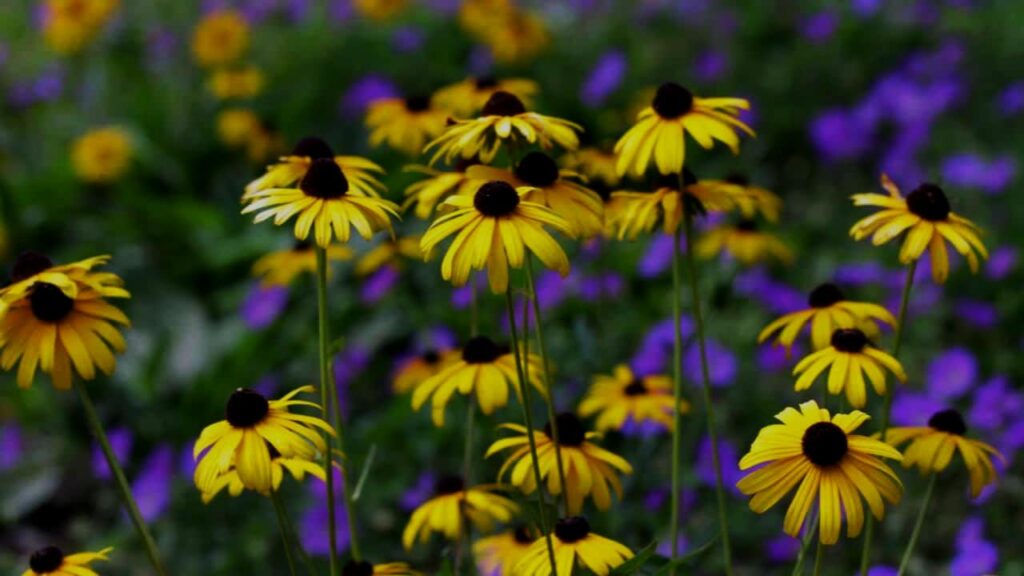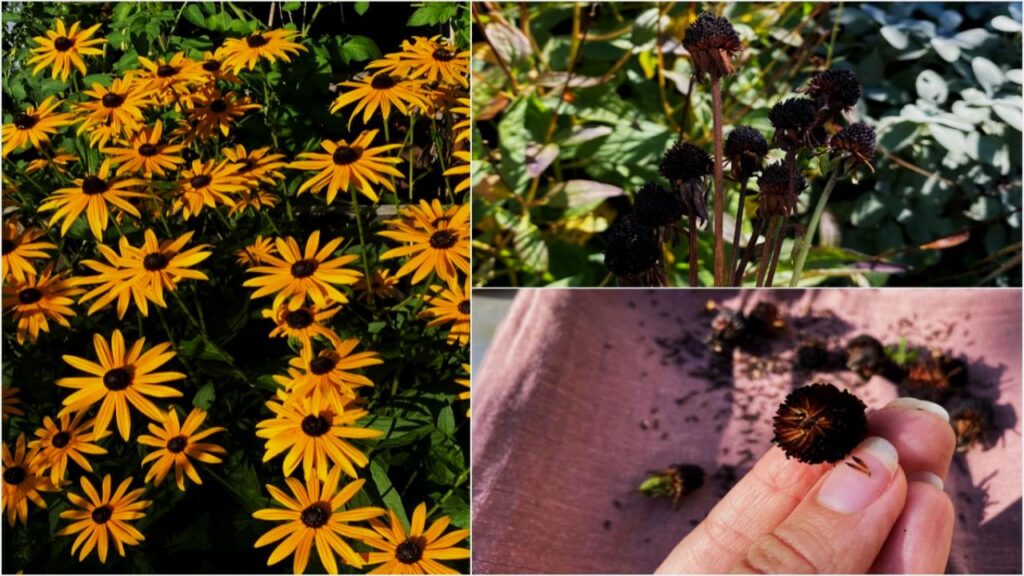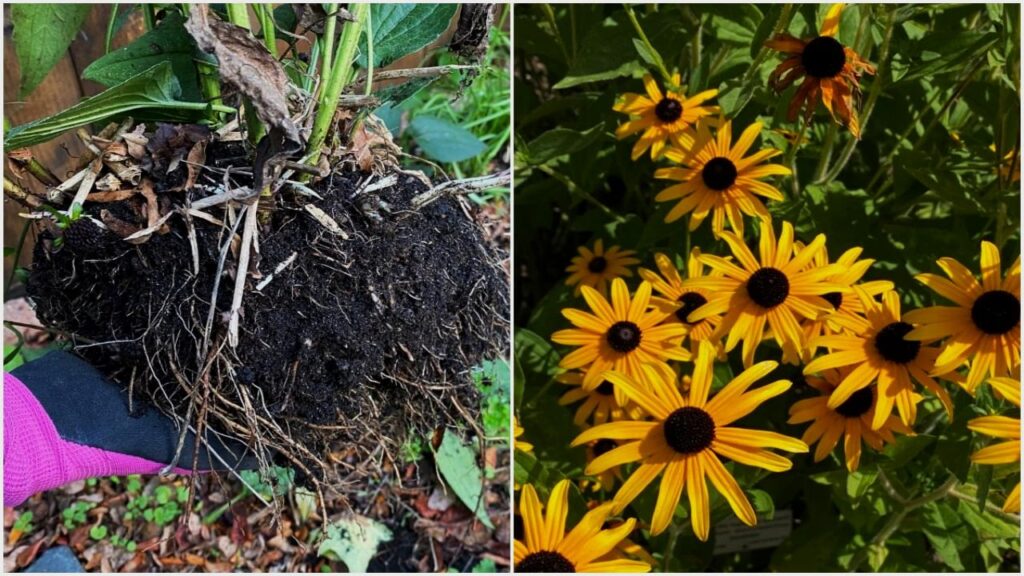Black-Eyed Susans (Rudbeckia hirta) are the golden girls of American gardens. With their bright yellow petals and signature dark centers, these cheery wildflowers don’t just look good—they work hard, too. They’re pollinator magnets, drought warriors, and backyard bird feeders rolled into one low-maintenance perennial.
Whether you’ve got a balcony, backyard, or acres of wild landscape, Black-Eyed Susans are a sure bet for beauty and biodiversity. And with the right tips, you’ll have them thriving year after year—without breaking a sweat.

Why Gardeners Swear by Black-Eyed Susans
They Bring the Sunshine
These bold, daisy-like blooms are like little sunbursts in your yard. With long blooming seasons from May through October, they keep your garden cheerful for months.
Bees, Butterflies, and Birds Love Them
According to Penn State Extension, Black-Eyed Susans are a favorite pitstop for pollinators. And in winter, birds feast on their dried seed heads.
Tougher Than They Look
They thrive in poor soil, full sun, and even during droughts. Perfect for lazy gardeners or anyone battling rough growing conditions.
Flexible for All Spaces
Plant them in beds, borders, wildflower meadows, or containers. They adapt easily and pair well with just about anything.
Popular Varieties to Consider
Want to mix it up? Check out these favorites:
| Variety | Features |
|---|---|
| Goldsturm | Compact and bushy; deep yellow flowers |
| Indian Summer | Giant blooms up to 9 inches wide |
| Cherry Brandy | Stunning reddish-maroon petals |
| Little Goldstar | Perfect for small spaces or pots |
Each of these has a slightly different vibe, but they all bring the same reliability and charm.
How to Grow and Care for Black-Eyed Susans?
When to Plant
Start in early spring, once the frost danger has passed. In warmer zones, late fall works too.
Sunlight and Location
Pick a spot that gets at least 6 hours of direct sun. These plants love the heat and need light to bloom heavily.
Soil and Watering
Use well-draining soil. Sandy, clay, or loam—it doesn’t matter, as long as it drains. Water new plants often; once established, once-a-week watering is enough.
Step-by-Step Seasonal Care Guide

Spring
- Plant seeds or transplants
- Add compost or organic matter
- Mulch lightly
Summer
- Water if rainfall is below 1 inch/week
- Deadhead spent blooms
- Watch for leaf spots and mildew
Fall
- Let seed heads dry for bird food
- Divide clumps if overcrowded
- Save seeds if desired
Winter
- No need to cut back unless diseased
- Leave dry stalks for bird feeding and winter interest
How to Propagate Black-Eyed Susans
You’ve got three easy ways:
- From Seed – Start indoors 6–8 weeks before last frost or direct sow outdoors.
- Division – Every few years, dig up mature clumps and replant.
- Cuttings – Not common but possible with root hormone in early spring.
If you’re seeding, lightly rake them into the soil but don’t bury them deep—they need light to germinate.
Best Companion Plants
Want a vibrant, bee-friendly combo? Pair Black-Eyed Susans with:
- Coneflowers (Echinacea)
- Coreopsis
- Yarrow
- Salvia
- Russian Sage
- Milkweed
These combos boost biodiversity and look stunning together.
Common Growing Mistakes to Avoid

- Overwatering – They hate soggy feet. Drainage is crucial.
- Planting in full shade – Less light means fewer blooms.
- Crowding them – Leads to poor air circulation and mildew.
- Not dividing regularly – Causes clumps to die out in the center.
Fun Facts and Cultural Significance
- Native Americans used Rudbeckia for medicinal purposes, including treating colds and snake bites.
- It’s the state flower of Maryland.
- Black-Eyed Susans symbolize encouragement and justice—a great gift for someone needing a little sunshine.
